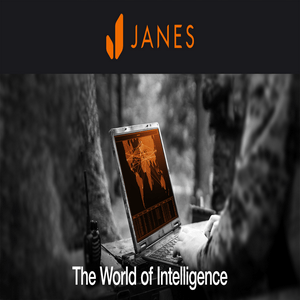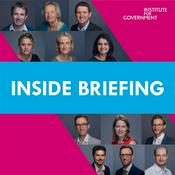Available Episodes
5 of 137
- From data to decisions: The future of OSINTRecorded live at DSEI 2025, this episode features host Kate Cox and a panel of Janes experts, Sean Corbett, Leendert Van Bochoven, and Phil Smith. They discuss the evolution of open-source intelligence (OSINT) and its vital role in global security. The panel examines the challenges posed by an overwhelming volume of data in the digital age and explores how artificial intelligence, machine learning, and automation are transforming the collection, processing, and verification of open-source information and why the human analyst is more important than ever.Watch the video of the recording on our YouTube channel: https://www.youtube.com/watch?v=-8qE-hKSG5g--------27:58
- Fundamentals first: The case for foundational intelligence todayRecorded live from DSEI 2025. Join host Kate Cox and a panel of Janes experts including Sean Corbett, Dylan Lehrke, and Tom Barton, as they unpack the essentials of intelligence, from foundational data to cutting-edge military insights. Discover what goes on behind the scenes in crafting the intelligence that informs global defence strategies and decision making.Watch the video of the recording on our YouTube channel: https://www.youtube.com/watch?v=OZk66z7y4Og--------27:17
- Knowledge to understanding and how to get there - part twoIn the second part of this podcast, Lt Gen (retd) Mike Groen, Harry Kemsley, and Sean Corbett continue to explore how decision making is evolving in the age of data overload. They discuss the concept of data tribalism within military and intelligence communities and the hurdles and potential of integrating diverse data types for enhanced decision making. Discover how artificial intelligence (AI) and human collaboration could revolutionise intelligence analysis and operational efficiency, challenging traditional practices and requiring a new understanding of technology’s role.--------31:55
- Knowledge to understanding and how to get there - part oneIn this two-part episode, Lieutenant General Mike Groen (retd) joins Harry Kemsley and Sean Corbett to share his experience in the US intelligence and operational communities and how decision making is evolving in the age of data overload. They explore the transition from drowning in data to achieving clear thinking and decisive action in military and security operations. Discover how AI and technology can amplify human judgment without replacing it, and why putting the human brain on a pedestal is crucial in today's information-rich environment. Listen to how unlocking the potential of AI as a force multiplier can support strategic decision making.--------36:27
- China's growing influence in the PacificChina’s expanding influence in the Pacific has strategic implications for international security. In this episode Kate Cox and Sean Corbett are joined by experts Dr Greg Brown, senior fellow and director of Regional Cooperation and Coordination at Australian Strategic Policy Institute (ASPI) USA and adjunct professor at Georgetown University, and Claire Chu, principal analyst at Janes, to explore the role of open-source intelligence (OSINT) in understanding these power plays. They also consider the nuanced responses of Pacific nations and global powers to provide a deeper understanding of why China is so invested in the region.--------39:21
More Government podcasts
Trending Government podcasts
About The World of Intelligence
Janes delivers validated open-source defence intelligence across four core capability areas threat, equipment, defence industry and country that are aligned with workflows across the defence industry, national security and government.
Podcast websiteListen to The World of Intelligence, The DSR Network and many other podcasts from around the world with the radio.net app

Get the free radio.net app
- Stations and podcasts to bookmark
- Stream via Wi-Fi or Bluetooth
- Supports Carplay & Android Auto
- Many other app features
Get the free radio.net app
- Stations and podcasts to bookmark
- Stream via Wi-Fi or Bluetooth
- Supports Carplay & Android Auto
- Many other app features


The World of Intelligence
Scan code,
download the app,
start listening.
download the app,
start listening.
























